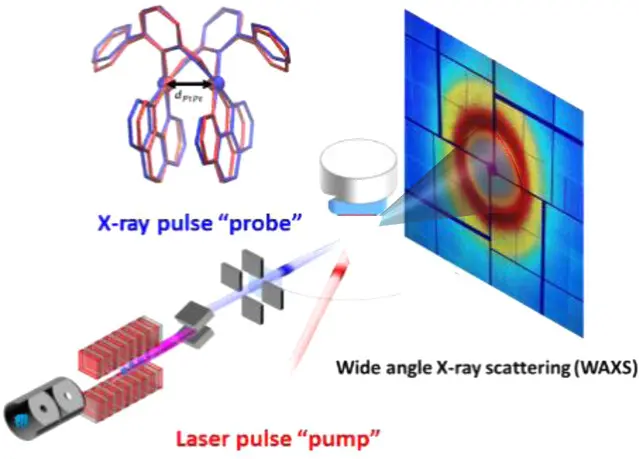A recent study conducted by a team of scientists from various prestigious institutions, including the U.S. Department of Energy’s Argonne National Laboratory, Northwestern University, North Carolina State University, and the University of Washington, has revealed groundbreaking insights that challenge a long-standing assumption in quantum mechanics. The research, published in Nature and Angewandte Chemie International Edition, demonstrates the breakdown of the Born-Oppenheimer approximation, which assumes that the motion of nuclei and electrons in a molecule can be treated independently.

The team’s findings shed light on the interplay between the dynamics of nuclei and electrons on incredibly fast timescales, showcasing a close relationship between the two. This discovery has significant implications for various fields, including the design of molecules for solar energy conversion, energy production, and quantum information science.
According to Lin Chen, an Argonne Distinguished Fellow and professor of chemistry at Northwestern University, “Understanding the interplay between the spin-vibronic effect and inter-system crossing could potentially lead to new ways to control and exploit the electronic and spin properties of molecules.”
The spin-vibronic effect, a phenomenon in which changes in nuclear motion affect the motion of electrons within a molecule, plays a crucial role in the molecule’s spin and electronic dynamics. However, observing this effect directly has proven challenging due to the need for precise measurements on extremely fast timescales. To overcome this obstacle, the team utilized ultrashort laser pulses, tracking the motion of nuclei and electrons in real-time, with a temporal resolution down to seven femtoseconds (seven millionths of a billionth of a second).
The researchers studied four distinct molecular systems, each engineered with controlled structural differences, allowing them to investigate various inter-system crossing effects and vibrational dynamics. This approach provided a comprehensive understanding of the relationship between these factors.
Felix Castellano, a professor at North Carolina State University and co-corresponding author of the studies, explained, “The geometrical changes that we designed into these systems caused the crossing points between the interacting electronic excited states to occur at slightly different energies and under different conditions. This provides insight for tuning and designing materials to enhance this crossing.”
By inducing vibrational motion, the team observed how the spin-vibronic effect altered the energy landscape within the molecules, ultimately increasing the probability and rate of inter-system crossing. Additionally, the researchers discovered key intermediate electronic states that played a crucial role in the operation of the spin-vibronic effect.
The experimental results aligned closely with quantum dynamics calculations conducted by Xiaosong Li, a professor of chemistry at the University of Washington and a laboratory fellow at DOE’s Pacific Northwest National Laboratory. Li expressed his satisfaction with the findings, stating, “These experiments showed very clear, very beautiful chemistry in real-time that aligns with our predictions.”
The insights gained from this research offer significant progress in the design of molecules that can harness the power of this quantum mechanical relationship. The implications are far-reaching, potentially impacting the development of more efficient solar cells, and advancements in light-matter interaction-based medical treatments. More applicable to our interest on these pages, the implications of this research extend beyond traditional displays, with implications for advanced electronic displays used in smartphones, tablets, televisions, and other devices. The ability to control and exploit the electronic and spin properties of molecules opens doors for developing more efficient, vibrant, and energy-saving display technologies.
Reference
Leshchev, D., Valentine, A., Kim, P., Mills, A., Chakraborty, A., Biasin, E., Haldrup, K., Hsu, D., Kirschner, M., & Rimmerman, D. (n.d.). Revealing Excited State Trajectories on Potential Energy Surfaces with Atomic Resolution in Real Time. Angewandte Chemie International Edition, e202304615. https://doi.org/10.1002/anie.202304615

